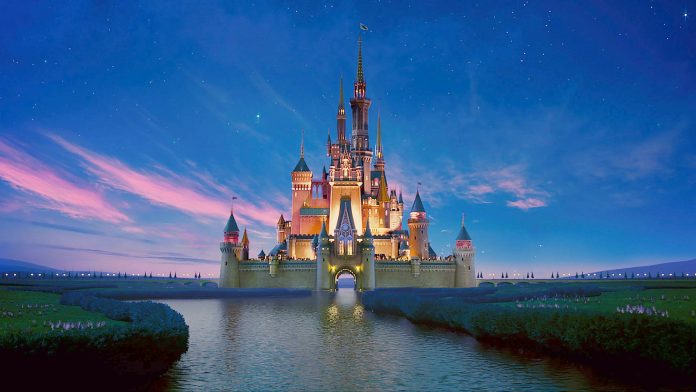This article has been written by Soha Goyal, pursuing a Diploma in Intellectual Property, Media and Entertainment Laws from LawSikho.
Table of Contents
Introduction
Have you ever wondered how Disney’s Mickey Mouse, which first appeared in 1928 in the movie ‘Steamboat Willie’, still maintains its copyright? It’s astonishing that Disney has been able to preserve its rights over its most popular character and protect it from entering the public domain even after ninety-three years of its first publication. Disney is one of the oldest and biggest players in the field of movies and has expanded its business in multiple areas like music, cable networks, theme parks, and clothing. Becoming an entertainment giant took a lot of time and money, thus, they have acquired numerous intellectual properties over time. Disney has played the most significant role in soliciting the development of copyright laws in the United States.
How has Disney changed copyright laws?
The copyright law was first incepted in the United States in the eighteenth century with the enactment of the Copyright Act, 1790, which entitled 14 years of copyright protection with a renewal option of additional 14 years should the copyright holder be still alive at the end of the first 14 years. This only applied mainly to charts, maps, and books along with other requirements like registration and use of copyright notice, lack of which, the work automatically entered the public domain. By 1831, the copyright period was extended to 28 years with a renewal period of 14 years and in 1909 the renewal period was again changed to 28 years, resulting in a total of 56 years of copyright protection. But due to lack of awareness of intellectual property rights, copyrights were rarely registered in the first place and only a tiny fraction of them renewed them.
Under the 1909 copyright law, Walt Disney’s Mickey Mouse was given protection for 56 years (with renewal) and was about to enter the public domain in 1984. With the impending loss of copyright over its leading cartoon character, Walt Disney started to lobby for an extension of the period of copyright protection under the Copyright Act.
With 8 years left for the expiration of copyright over Mickey Mouse, in 1976, Congress reshaped the Copyright Law, extending the copyright protection for a period of 50 years after the death of the copyright holder, with a maximum term for already-published work raised to 75 years. This gave Disney an additional 19 years, pushing the expiry of Mickey’s copyright protection out to 2003.
With the onset of the twenty-first century, not only Mickey’s copyright expiration was getting close but various other famous Disney characters were also about to lose their copyright protection. Pluto was set to expire in 2005, Goofy in 2007, and Donald Duck in 2009 which led to another round of lobbying by Disney for extension of copyright protection terms. In 1988, Congress introduced the Sonny Bono Copyright Term Extension Act, 1988, popularly known as the Mickey Mouse Protection Act. The act further lengthened the copyright protection term for works created on or after 1st January 1978 until 70 years after the death of the copyright holder and for corporate works to 95 years from the year of first publication or 120 years from the year of creation, whichever expires first. This again prolonged the expiration of Mickey’s copyright and conferred Disney with protection till 2023.
This implies that nothing created after 1922 has yet entered the public domain. This extended control over copyright has been suffocating for the creative world. Public Domain serves an important role for artists for adaptation and building ideas on existing works. Adequate copyright law should provide enough time for the original creator to make profits off their work and claim ownership and then provide for it to enter the public domain for the greater good of the creative world.
Importance of works under public domain
One can understand the significance of the creative freedom of artists to build on ideas and share inspiration through some of Disney’s own classic creations. The movie ‘Steamboat Willie’ featuring Mickey Mouse for the very first time was adapted from Buster Keaton’s Steamboat Bill Jr. in 1928 which itself was named after Arthur Collins’ 1911 song ‘Steamboat Bill’. It was a milestone that created a splash in the U.S. pop culture and is still considered as one of the greatest creations of all times in the world of animation. In an attempt to retain ownership over their leading character ‘Mickey Mouse’, Disney removed Keaton’s and Collin’s names from the narrative, depriving the artists of the credit they deserved for their contribution.
Since 2006, Disney has lobbied for over 19 copyright bills till now demanding an extension of the period of copyright protection. Disney’s hypocrisy is apparent as the character for which they have been lobbying for ages to protect from entering the public domain was itself introduced in the movie which was an adaptation of another’s work. There are many more works in the public domain that have been Disney-fied into dreamy movies. Among their remodeled movies, the princesses are most prevalent. Cinderella’s first form depicting social climbing, slipper-centric romance is credited to the ancient Greek geographer Strabo of a Greek courtesan Rhodopis marrying the Pharaoh of Egypt. The Sleeping Beauty was first seen in the anonymous prose romance Perceforest from the 14th century, then published posthumously by Giambattista Basile in 1634 and also adapted by Charles Perrault in 1697 and Brothers Grimm in 1812. Creativity flourishes from other’s creations. Artists absorb ideas from the screen or pages in their hands, put in their imagination, and develop their versions of them. If there’s no room for people to blend up different ideas and rework them, we kill creative craft.
Future prospects for Disney
Steamboat Willie is finally set to enter the public domain in January 2024. Does this mean that now anyone can use the Mickey Mouse character commercially without a license? Although Mickey Mouse will indeed come under the purview of the public domain, it is crucial to understand which version of the character will be publicly accessible and which ones will still be withheld by Disney’s copyright. It is only the version of Mickey Mouse that appeared in its debut film ‘Steamboat Willie’ and ‘The Gallopin Gaucho’ which was produced in the same year, that will be free from copyright. While it may seem like a minor technical issue but there have been various changes in the appearance of the character which is why the image of Mickey Mouse that we are familiar with today- the one featured in the movie Fantasia, appears in the commercials for Theme Parks and is displayed in the merchandise will still be protected under Disney’s copyright.
To underline a few of the variations between Mickey from Steamboat Willie and its modern counterpart, the following are the salient features of the original:
1) Mickey is all monochrome in black and white, later on, there was a promotional poster released for the movie that colorized the character.
2) Mickey is missing the white gloves that are a must in today’s version.
3) Mickey’s eyes are effortless black dots as compared to today’s expressive pupils.
4) Mickey’s body structure itself is very different and uncomplicated than today’s detailed version.
So, do these details really matter? Well, when it comes to copyright these details suggest what is entering the public domain and what remains off-limits. While the complete attributes of copyright-related exclusionary are comparatively complex, it can be concluded that the owner of a copyrighted work has the exclusive:
- Reproductive Rights
- Derivative Rights
- Distributive Rights
- Performance Rights
- Paternity Rights
Thus, once Steamboat Willie enters the public domain, Disney will lose its exclusive rights to all of the above.
The implication regarding the public’s rights is uncomplicated and straightforward for most of these uses. After 31st December 2023, anyone can copy, distribute, and publicly perform or display Steamboat Willie in part or its entirety. There is only little Disney can do to prevent such use, unless there is a violation of an associated trademark, which, as a separate legal subject, falls outside the scope of copyright law. But, with respect to derivative works, however, the consideration surely becomes a bit trickier.
Conclusion
Considering that the current copyright laws are constant in 2024, it will be open for the public to fashion new stories involving the original iteration of Mickey Mouse and also change the character design to incorporate a few original elements. However, creating any such derivative work that would infringe upon the contemporary version of Mickey Mouse, still remains off the limits for the public. This intricate paradigm gets further complicated when one considers more than just the two versions of Mickey Mouse. Disney’s famous cartoon has undergone numerous permutations over the course of decades, thus those seeking to capitalize on Mickey’s first step into the public domain ought to proceed with a lot of caution. Thus, one can see how since its debut movie ‘Steamboat Willie’, Disney’s mousy mascot has been steering the U.S.’s copyright laws.
References
- https://alj.artrepreneur.com/mickey-mouse-keeps-changing-copyright-law/.
- https://lucentem.com/2018/12/05/disney-vs-the-public-domain-how-mickey-mouse-continues-to-protect-his-copyright/.
- https://arstechnica.com/tech-policy/2019/01/a-whole-years-worth-of-works-just-fell-into-the-public-domain/.
- https://nyunews.com/opinion/2019/10/01/disney-public-domain-copyright/#:~:text=Disney%20 once%20again%20lobbied%20 Congress,lobbied%20for%2019%20copyright%20 bills.
- https://blog.jipel.law.nyu.edu/2019/12/in-2024-mickey-mouse-will-finally-enter-the-public-domain-sort-of/.
Students of Lawsikho courses regularly produce writing assignments and work on practical exercises as a part of their coursework and develop themselves in real-life practical skills.
LawSikho has created a telegram group for exchanging legal knowledge, referrals, and various opportunities. You can click on this link and join:
 Serato DJ Crack 2025Serato DJ PRO Crack
Serato DJ Crack 2025Serato DJ PRO Crack










 Allow notifications
Allow notifications



